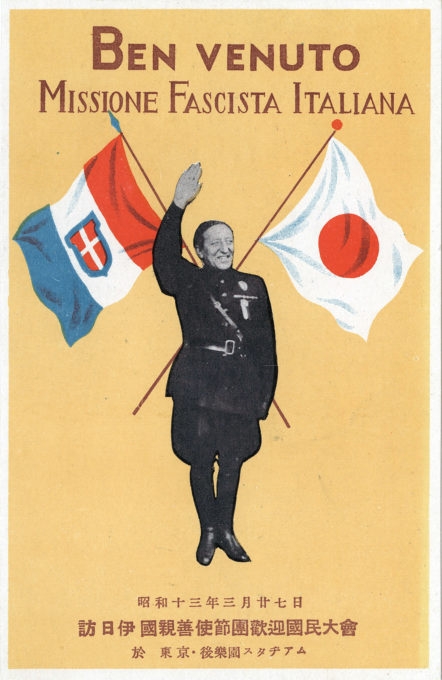“The rise of Japanese fascist power, a matter of only twenty years of so, was identified with the rise of the new plutocrats in Japan, who have been the so-called heavy industry people, whose business has been greatly fostered by the Government budgets.
“Associated with them are a few large landlords who have invested heavily in [the] munitions industry and in mines, including the imperial household. The majority of those importers who handled raw materials for munitions was also with them.
“Since 1922, the year of the Washington Conference and the Nine Power Treaty, and especially after the Mukden Incident in 1931, their influence and power have been constantly increasing over those of the old plutocrats in Japan. These old plutocrats were light industry people, chiefly the textile magnates, like Fuji, Toyo, Dai Nippon and Kanegafuchi, their bankers, the majority of Japanese landlords and also a majority of the export merchants.
“… Naturally there was a difference between the two groups as regards the external relations of Japan. Whereas the old plutocrats, chiefly textile magnates, were for an immediate market expansion on the continent and in the South Seas, the new plutocrats, chiefly the munitions people, were for the immediate acquisition of raw materials, of which the most important was coal [in Manchuria and China].
“Whereas the former was advocating a diplomatic measure for Japan’s problems in China, the latter frankly agitated for military aggression.”
– “Fascism in Japan”, by Chen Han-Seng, India Quarterly, October 1945

“Ben venuto”, Missione Fascista Italia (Italian Fascist Mission) Goodwill Tour of Japan advertising postcard, Tokyo, 1938. A delegation of 22 Italian government Fascists embarked on a one-month goodwill mission to Japan and Manchukuo in March 1938, headlining a national convention for Japanese adherents at Korakuen Stadium in Tokyo on March 27. Fascism never developed into a mass movement in Japan; unlike Italy or Germany, there wasn’t any cult of a supreme leader (emperor-worshipping notwithstanding). Instead, it took the form of an expansionist military dictatorship placing a heavy stress on agrarianism and a central role for military officers in national control.
See also:
Anglo-Japanese Alliance, c. 1905
French Legation, Tokyo, 1905.
“A high point in the celebrations of fascist Italy was reached during a visit to Japan by an official delegation of the National Fascist Party. The delegation of some two dozen Fascists, headed by the ex-diplomat from Romagna Giacomo Paulucci de’Calboli and the writer and amateur Orientalist Pietro Silvio Rivetta, arrived at Nagasaki on 22 March 1938. It was the port of entry for a one-month sojourn during which the party toured Japan’s major cities and Manchuria.
“As the most high-profile visit of Italians to Japan to date, officials took great care to make it a memorable one. The visit was highly publicized. The media kept a close eye on the journeying fascist delegation, reporting on their activities and meetings with local and government notables. The impressive number of gifts for Mussolini that the travelling party collected in the encounters indicates the extent to which authorities and elites took the alliance seriously.
“Yonai Mitsumasa, the Navy Minister, donated a precious samurai armor, complete with bow, arrows, and sword. The city of Fukuoka also offered a sword, and Kure a lacquered pen. Tsuda Shingo, the head of the Kanegafuchi Spinning Company in Kobe contributed with an ‘enormous and precious carpet’ and Shirai Matsujiro, director of the Osaka Bunraku Theatre Company, a ‘three-hundred year old puppet.’ From Arita, a rural township in Saga Prefecture famous for pottery, came a ‘splendid porcelain plate’ while in Tokyo the mayor added a ‘large stone lantern’ – in Manchukuo, the emperor Puyi gave a ‘marvellous skin of a tiger, a rare exemplar for its size and value.’
“Ordinary Japanese were also drawn into the festivities. Socializing with the Italian visitors was common during the many receptions held in their honor in the various cities they visited.
“The delegation included a film crew from Italy’s documentary and cinematographic center, the Istituto Luce. The footage they shot during the tour of Japan, Korea, and Manchukuo reveals the extent to which Japanese authorities mobilized the population for the occasion.
“Some Japanese expressed their opinions through quasi-lyrical statements such as those published in the daily Yomiuri shinbun:
Welcome, delegation from our faraway friend Italy, be our guest
in this bright spring.The empire of the rising sun and Fascist Italy are fraternizing, the
flowers are in bloom, and the birds sing.
– The Fascist Reflection Japan and Italy, 1919-1950, by Reto Hofmann, 2010

